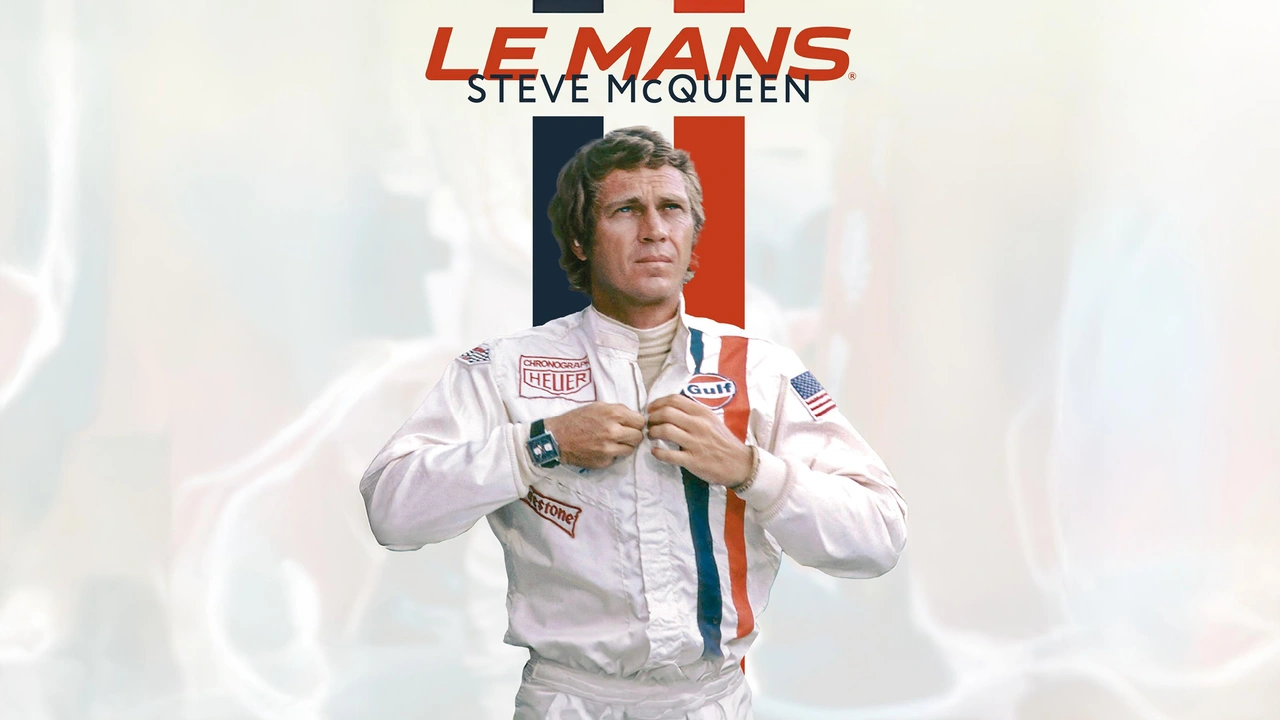The Heuer Monaco Reference 1133B worn by Steve McQueen is up for auction.
Heuer Monaco Reference 1133B worn by Steve McQueen – 500,000 to 1,000,000 USD
It is incredibly rare for a watch to cut through into popular culture in a lasting and powerful way. James Bond’s Rolex Submariner, the Omega Speedmaster that went to the moon, and the “Paul Newman” Rolex Daytona belonging to Paul Newman himself have all left their marks in the zeitgeist and, particularly the last example, have proven their emotional and financial value.
But to a certain group there is a watch that is elevated above all of the others, that produced imagery in both cinematic and photographic form that have reverberated through decades, was associated with the coolest person on Earth of their time, created an icon out of a model that was not initially well received by consumers, and perfectly connected one watchmaker to the universe of motorsport. It is, of course, the Heuer Monaco reference 1133B worn by Steve McQueen during the filming of his passion project.
When the collection was launched in 1969 it signalled a new era and direction for Heuer. With its revolutionary case, the first square, water resistant chronograph, housing an even more revolutionary movement, the first commercially available automatic chronograph calibre, it was a tour-de-force in innovation, not just for the company but the entire horological industry.
While visionary creatives such as Stanley Kubrick, Sammy Davis Jr. and Oscar Peterson appreciated the avant-garde design, the broader consumer market did not, and initially sales were disappointing. So in 1970 when Jack Heuer received an unsolicited call from a property master on a movie saying that Steve McQueen had chosen a Monaco to wear for his character in the film, Jack eagerly seized the opportunity.
Pre-Production at the racetrack
It is worth rewinding a bit to understand how Steve made the decision to wear such an unusual watch as the driver Michael Delaney. Having been in France from mid-April when the traditional testing day took place in advance of the famous circuit, McQueen had announced he would not be competing personally due to insurance reasons, but he stayed to take part in preparations, including running the cars that would be used for filming as well as defining the wardrobe and other topics of the production.
While the suit that Delaney would wear in the movie was easier to define, Steve wanted to look like a driver he respected deeply: Jo Siffert, the watch on his wrist had to be decided as well to make the hero of the movie absolutely authentic. It was at this time that the property master Don Nunley prepared a table of watches for Steve to choose from, including models from Rolex, Omega, Longines and, of course as the watch of drivers, Heuer. To make the decision-making process easier for the star, and knowing his preference for models on a bracelet, some of the pieces had been fitted with a metal band, even it if was not from the manufacturer itself.
McQueen initially considered the Omega Speedmaster, at which point it was mentioned that it had just gone to the moon and was known as an astronaut’s watch. Besides it would look odd to wear Omega when he had a patch on his suit saying Heuer, exactly like Siffert. It was at this moment that McQueen picked up the Heuer Monaco with handsome blue dial from the table and strapped it on.
This one decision, for the King of Cool, perhaps the most famous person on the planet at that moment, to wear that exact watch would have immeasurable impact on the course of Heuer, TAG Heuer and the Monaco collection across generations. The watch presented here, case number 160’304, is the exact piece that turned the Monaco into a legend.
A Special Request to Jack
Once McQueen had decided it was to be a Heuer on his wrist, Nunley made the call to the Heuer manufacture in Bienne, Switzerland to source more pieces for the movie. Able to speak to Jack himself, who was understandable excited about the opportunity to promote a model they were struggling to sell, as well as include timing equipment and other watches in the movie, it was decided to send a shipment directly to the set.
Given the short timeframe and the urgent nature, a Heuer employee Gerd-Rüdiger Lang, was enlisted to drive the crated consignment directly to the circuit during the weekend of the race itself in mid-June. There was an issue clearing customs at the border meaning that two weeks later the correct carnet had to be filed and taxes paid, but fortunately the watches arrived safely.
Among the pieces sent were 20 automatic chronographs, including the vital six reference 1133B models that were required for McQueen, to allow for additional watches for backups, beauty shots etc. A further 11 stopwatches, six manual wind watches, 17 additional timing instruments and two sets of Rally Master dashboard timers were also included.
Once the pieces from the factory were on set, it appears McQueen switched from wearing the example on the bracelet (as he can be seen to be wearing it in one behind the scenes photo during pre-production), to one on a strap. The reason for the change was most likely due to the fact that professional drivers, including the likes of Siffert and Bell who were on set, preferred to wear watches on a leather strap, which was more comfortable as they got hot while racing. Also, in the event of an accident, a strap would not do any further damage and could be cut off if required.
Used throughout filming and often visible in shots, many of the pieces sent by Heuer saw action, but it is the Monaco worn by McQueen that is clearly the best supporting actor of the movie. While it is difficult to define exactly which watch he wore on screen from the pieces that were present on set, it is clear that all piece with clear, traceable history back to the filming of Le Mans in 1970 have a claim to having been involved in production.
Of the six Monaco models that appear on the invoice from Heuer for those sent to set, all have now become known to the market. Once filming had wrapped, two of the watches went to McQueen:
- One with case number 160’503 that he gifted to his business manager Bill Maher as a token of his gratitude for Maher support during production of the movie
- The other, with unknown case number, was given by McQueen to his personal mechanic Haig Altounian, that was the last piece to be publicly sold in December 2020 for 2,200,000 USD.
The other four watches went with Nunley:
- Case number 160’903, that eventually found its way to the TAG Heuer Museum
- One that was gifted to a friend of Nunley’s who then gave it to his son
- One that was later sold to a private collector
- A further piece that was later sold to a private collector
Another Life in Racing
What makes the watch presented here so fascinating is not only its status as the watch that resulted in McQueen to wear a Monaco and become the face of the collection, and in some ways Heuer and TAG Heuer as a brand, but also that it has led an extraordinary life after its time filming the movie.
When production wrapped in autumn of 1970 and the Solar village that had housed the huge crew required for such a movie was dismantled, the props got distributed and sold. Word went around among those that were still present about the deals that could be had, and a young mechanic by the name of Bevan Weston, who was there to support Derek Bell and his number 8 Ferrari, decide to investigate.
At the props office he got a Solar Productions jacket and some Gulf overalls, when his eyes landed on the watches. Enquiring how much they were and the person responsible said they were for sale for a nominal fee, so Weston chose a blue Monaco just like McQueen had been wearing, with a metal bracelet attached.
Bev, as he is known, would go on to have an incredible career as a professional mechanic spanning decades, including acting as crew chief at the Indy 500 for many years on behalf of McLaren, notably in 1971, the year after being on set, where he was working on Peter Revson’s car.
To have a watch that was central to a pivotal moment in cultural history at the intersection of cinema and watchmaking, which went on to have a whole other life, traveling the globe to attend races, is perhaps the greatest testament to the incredible significance of the Monaco presented here.
The most historically important Heuer and TAG Heuer watch ever made, the totem to the importance of one of the great watchmakers and its inseparable connection to motor racing.
Article by: Nicholas BiebuyckHeritage Director at TAG Heuer. The edge magazine



